Medical expert of the article
New publications
Preparations
Arthritis pills
Last reviewed: 03.07.2025

All iLive content is medically reviewed or fact checked to ensure as much factual accuracy as possible.
We have strict sourcing guidelines and only link to reputable media sites, academic research institutions and, whenever possible, medically peer reviewed studies. Note that the numbers in parentheses ([1], [2], etc.) are clickable links to these studies.
If you feel that any of our content is inaccurate, out-of-date, or otherwise questionable, please select it and press Ctrl + Enter.
In the process of treating arthritis of various etiologies, one of the most important components is medications. Arthritis pills are divided into several different groups:
- Painkillers.
- NSAIDs and glucocorticoids.
- COX-2 inhibitors.
- Immunomodulatory agents.
- Basic drugs that are used to treat rheumatic diseases.
Indications arthritis pills
Release form
Shark pills
Shark tablets include shark cartilage and other natural components that allow you to restore the cartilaginous surface of joints and bones in a natural way. The combination of plant elements and 2 chondroprotectors allows you to speed up the effect of the drug. It should be noted that the anti-inflammatory effect of Shark cartilage does not have the side effects that are inherent in NSAIDs.
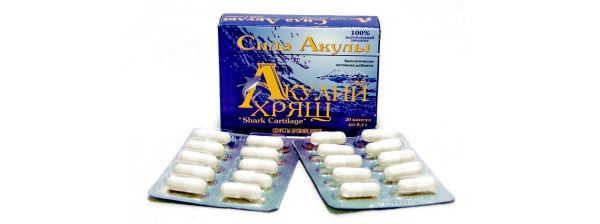
Stop arthritis
Stop Arthritis tablets are a drug used as a preventive measure against rheumatic diseases. Since it affects the cartilage of the joints, their (and the spine) pain and stiffness are reduced. The medicine prevents subsequent destruction of cartilage and also has a positive effect on the recovery process.
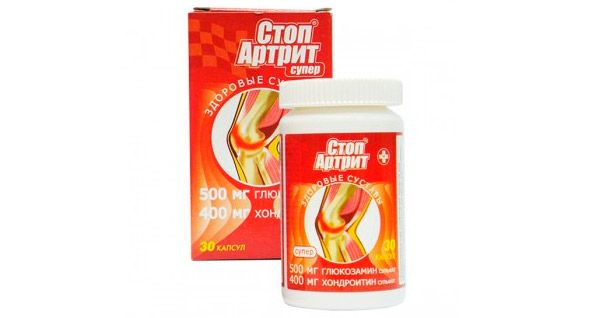
Methotrexate
Methotrexate is a cytostatic drug that belongs to the group of antimetabolites, which act as folic acid antagonists. The drug has a pronounced immunosuppressive effect in small doses.
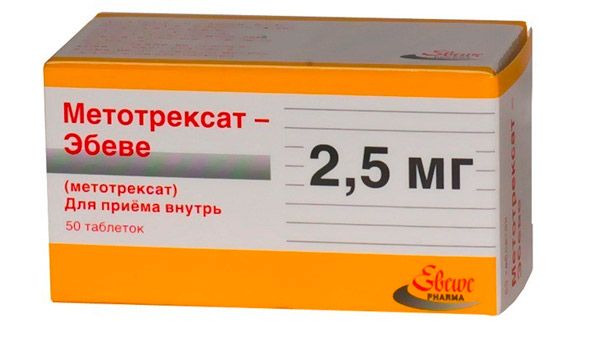
Rheumatoid arthritis pills
Basic drugs are mainly used for the treatment of rheumatoid arthritis. Usually, in such cases, drugs are used that can be divided into 5 main groups:
- D-penicillamine,
- sulfasalazine,
- antimalarial drugs,
- cytostatics,
- as well as gold salts.
Standard drugs used to treat arthritis prevent the destruction of the articular surfaces of the joints, and they are also used to treat concomitant autoimmune diseases such as systemic lupus erythematosus, ankylosing spondylitis, and Sjogren's syndrome. The drugs in this group prevent the development of arthritis, but do not eliminate its symptoms (this is how they differ from NSAIDs).
Basic drugs have a long-term effect - from the beginning of therapy until the first shifts towards improvement can take 3-6 months. Usually these drugs are prescribed together with NSAIDs and glucocorticosteroids.
To select the necessary basic medications, some time is needed - to check the effectiveness of several groups of drugs, which helps to achieve the maximum effect. If the drugs are well tolerated, you should undergo a full course of treatment, waiting out the initial stage of therapy, at which obvious symptoms of improvement are not yet observed.
If the drugs are chosen successfully and the treatment produces results, basic drugs are used for many years.
Immunomodulatory agents are usually used in cases of advanced, severe forms of the disease, when other drugs do not provide the necessary effect. But it is important to understand that when using these agents, complex treatment in combination with other drugs is needed to achieve the desired result.
Arava
Arava is a basic medicine with antirheumatic action. The drug has anti-inflammatory, immunomodulatory and antiproliferative effects. It is used in the treatment of adult patients suffering from rheumatoid arthritis in an active form. The medicine helps to reduce the severity of the symptoms of the disease, and also prevents the destruction of the structure of the articular surfaces of the joints.
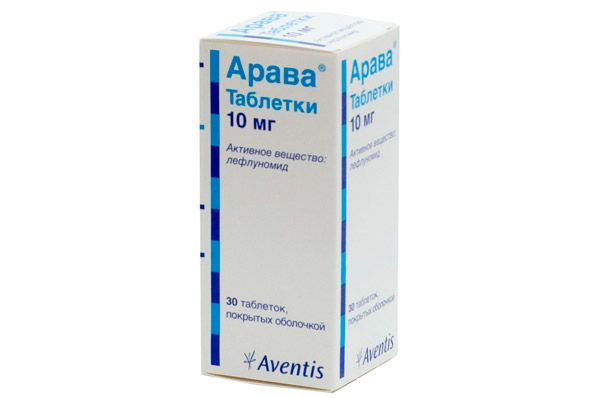
Plaquenil
Plaquenil has an immunosuppressive and anti-inflammatory effect on the body in rheumatoid arthritis (chronic and acute forms). The active substance of the drug - hydroxychloroquine - has a cumulative activity. The effect of taking the drug may appear only after a few weeks, but side effects can occur much earlier. To achieve the desired result, you need to take the drug for several months. If objective improvement is not observed within six months of taking Plaquenil, you need to stop using it.

Neoral
Neoral is an immunosuppressant drug, polymyxin, which includes 11 amino acids. It is used to treat rheumatoid arthritis (in active severe form, when standard long-acting antirheumatic drugs do not have the necessary effect or when they cannot be used).

Imuran
In the treatment of rheumatoid arthritis, the drug Imuran has a strong therapeutic effect without combining with corticosteroids. The drug has an immunosuppressive effect.
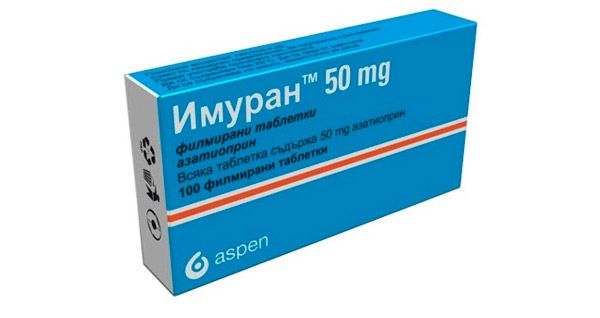
Cytoxan
Cytoxan is an antitumor drug with an alkylating effect, and also has an immunosuppressive effect. It is used for psoriatic and rheumatoid arthritis.
Pain Relief Pills for Arthritis
Analgesics help reduce pain, but they cannot relieve inflammation in the joints - this distinguishes them from NSAIDs. Painkillers are usually prescribed for the treatment of severe forms of arthritis with pronounced pain symptoms, such as osteoarthritis. These drugs may contain substances such as paracetamol, as well as codeine or aspirin, or other similar substances in combination.
Diclofenac is usually prescribed for the treatment of arthritis. The use of aspirin is sometimes accompanied by side effects from the gastrointestinal tract in the form of pain symptoms and discomfort in the abdomen, so you should not take it if you have a stomach ulcer, gastritis or on an empty stomach. It is advisable to wash down these drugs with milk. Codeine can cause constipation or nausea. In general, any drug should be prescribed by the attending physician after a thorough examination of the patient in order to assess the appropriateness of using certain drugs, taking into account the presence of concomitant diseases that he has in addition to arthritis.
 [ 15 ], [ 16 ], [ 17 ], [ 18 ], [ 19 ], [ 20 ]
[ 15 ], [ 16 ], [ 17 ], [ 18 ], [ 19 ], [ 20 ]
Aspirin
Osteoarthritis therapy usually begins with aspirin. Although this drug is successfully used for many therapeutic purposes, it is not effective enough for the treatment of arthritis and arthrosis. It is often replaced by other drugs.

It should be noted that aspirin should be prescribed with caution if the patient has blood diseases, because this drug reduces blood clotting.
 [ 21 ]
[ 21 ]
Anti-inflammatory tablets for arthritis
NSAIDs (the most well-known of these drugs are indomethacin, ketoprofen, diclofenac, as well as piroxicam, ibuprofen and butadion) are prescribed to eliminate the inflammatory process and painful sensations in the joints, as well as their swelling. These drugs are the best known and most frequently used group of drugs used for arthritis. They successfully cope with the main manifestations of the disease, but cannot resist the destruction of joints, and therefore are not able to affect the development and course of the disease.
NSAIDs prevent the production of hormone-like elements, as well as prostaglandins, which are the cause of the development of the inflammatory process and the appearance of pain. These drugs should be used with caution, as they can lead to erosive and ulcerative complications in the stomach. Sometimes they are prescribed in combination with other drugs that reduce the effect of non-steroidal anti-inflammatory drugs on the gastrointestinal tract.
Diclofenac
Diclofenac is one of the most popular and well-known NSAIDs. This drug helps in the treatment of arthrosis. It combines effective anti-inflammatory properties, as well as a strong analgesic effect.
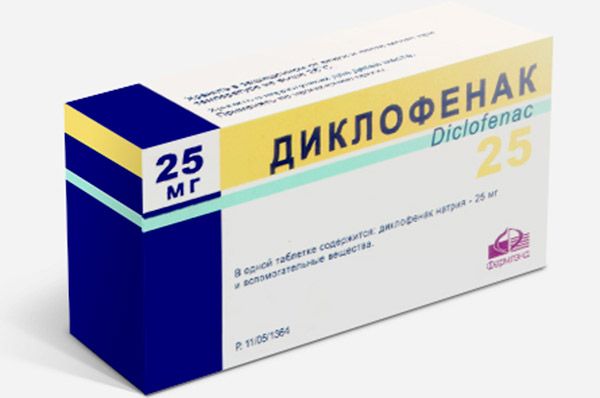
Ibuprofen
Ibuprofen is used in the treatment of joint diseases. It is less effective than indomethacin in terms of its analgesic and anti-inflammatory properties, but is much better tolerated by patients, without causing severe side effects.

Indomethacin
Indomethacin has highly effective anti-inflammatory properties and also has a strong analgesic effect. The drug is available in 25 mg tablets. Although it is considered one of the most effective remedies for arthrosis or arthritis, it should be taken into account that this drug has an extensive list of side effects.
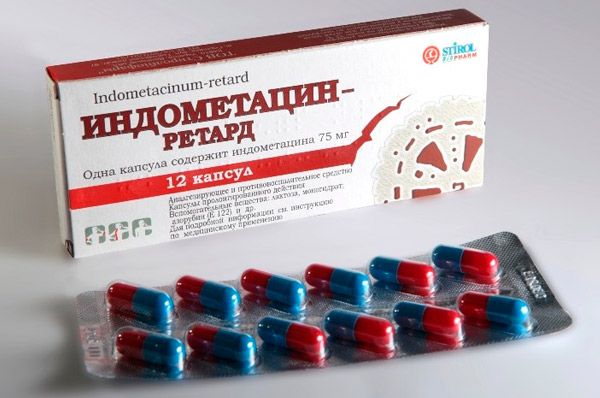
Ketoprofen
Ketoprofen is a NSAID, an arylcarboxylic acid derivative. The drug has antipyretic, analgesic, and anti-inflammatory properties. It helps reduce pain in the joints both at rest and during movement, reduces swelling and stiffness in the morning, and increases the range of motion of the joints.
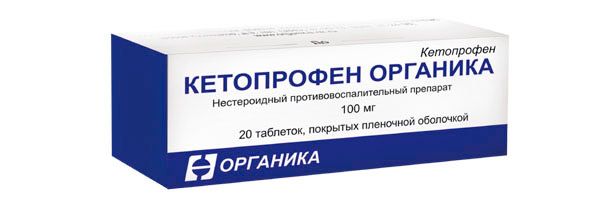
Meloxicam
Movalis is one of the most famous drugs, the active ingredient of which is meloxicam. The main advantage of this drug is that it can be used in long courses (several months or even years), but only under the supervision of a doctor. The drug is available in tablet form. This form of production allows the drug to act for a long time, so it is enough to take only 1 tablet per day. It can be taken both in the morning and before bedtime after meals.
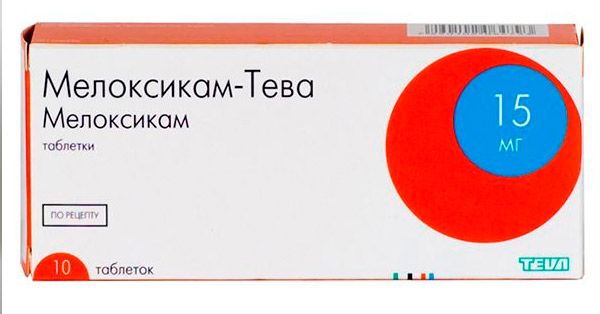
Celecoxib
Celecoxib has powerful analgesic and anti-inflammatory properties, helping to get rid of pain in arthrosis and arthritis, and at the same time causes almost no side effects from the gastric mucosa and the gastrointestinal tract as a whole. This drug is available in capsules with a dosage of 200 or 100 mg.
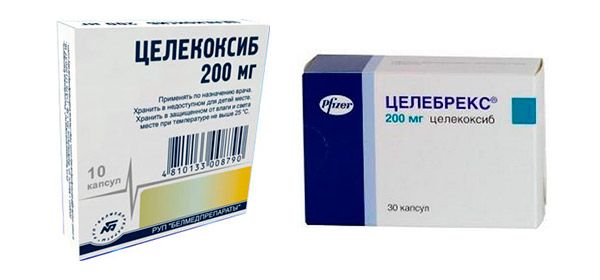
 [ 28 ], [ 29 ], [ 30 ], [ 31 ], [ 32 ]
[ 28 ], [ 29 ], [ 30 ], [ 31 ], [ 32 ]
Nimesulide
Nimesulide has a powerful anti-inflammatory and analgesic effect, helping to eliminate the main symptoms of arthrosis. It also has antioxidant properties and helps reduce the activity of elements that have a destructive effect on cartilage tissue, proteoglycans, and collagen fibers.
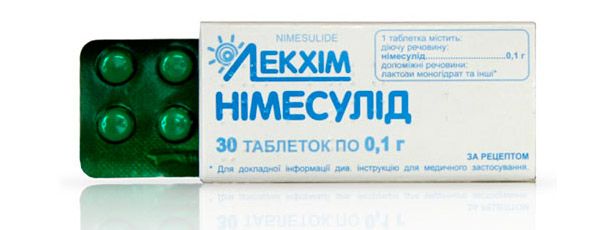
Etoricoxib (Arcoxia)
Etoricoxib is available in tablets under the trade name "Arcoxia". When taken in low doses (no more than 150 mg/day), it does not cause serious side effects and does not affect the gastric mucosa (like other drugs from the COX-2 drug group). During the treatment of arthrosis, the drug is prescribed in a dosage of 30-60 mg/day.
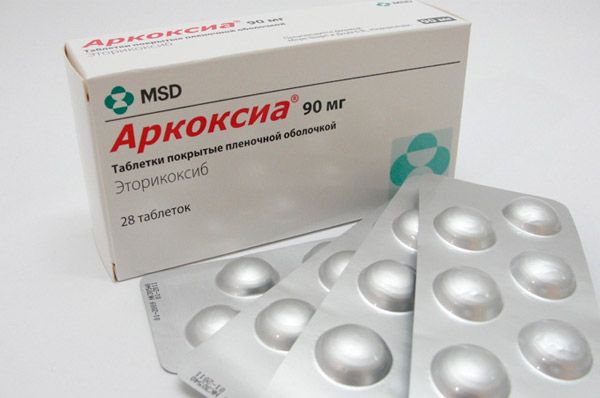
Since the drug of this group can negatively affect the cardiovascular system, at the initial stage of taking it, it is necessary to perform regular checks of the blood pressure indicator.
 [ 33 ]
[ 33 ]
Corticosteroids for arthritis
Corticosteroids are drugs that have the properties of the hormonal substance cortisol. In the body, it is produced by the adrenal cortex. Cortisol affects various systems in the body, including the immune system.
Corticosteroids reduce prostaglandin levels and also affect T- and B-lymphocytes, which participate in immune reactions. In this way, inflammation processes in the joints are affected.
These drugs are fast-acting and are often used for arthritis and other diseases of the musculoskeletal system. Compared to NSAIDs, corticosteroids have more powerful anti-inflammatory properties and are also effective in treating autoimmune diseases, which require preventing the development of autoimmune aggression against the body's own tissues. However, it should be taken into account that immunodepression increases the body's vulnerability to any infections - this is the main disadvantage of this group of drugs.
 [ 34 ], [ 35 ], [ 36 ], [ 37 ], [ 38 ], [ 39 ]
[ 34 ], [ 35 ], [ 36 ], [ 37 ], [ 38 ], [ 39 ]
Celestone
The active component of the drug is betamethasone, a synthetic systemic glucocorticoid. Since betamethasone acts as a synthetic derivative of prednisolone, it has powerful antiallergic, anti-inflammatory, and antirheumatic properties. Celeston has increased GCS activity, as well as a weak mineralocorticoid effect.
Prednisolone
Prednisolone is a synthetic substance that is capable of having similar characteristics to the hormones hydrocortisone and cortisone produced by the adrenal glands. When taken orally, this component is 4-5 times more active than cortisone and 3-4 times more active than hydrocortisone. In addition, prednisolone differs from these substances in that it does not cause significant water and sodium retention, and rarely causes hyperkalemia. The drug also has powerful anti-inflammatory properties.
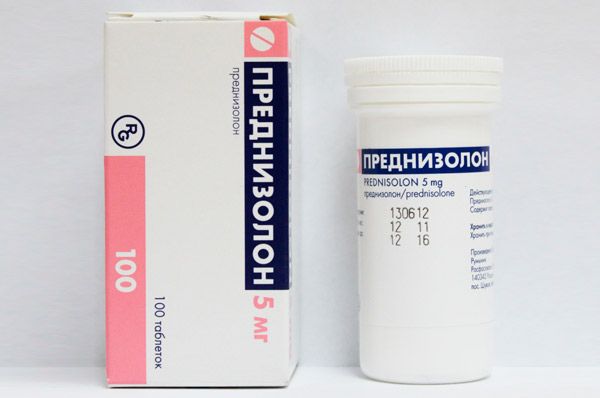
Diprospan
Diprospan is a drug from the glucocorticoid group, which has an immunosuppressive, antiallergic and anti-inflammatory effect on the body. This drug is used to treat autoimmune diseases of connective tissue, as well as the musculoskeletal system (such as osteoarthritis or rheumatoid arthritis).
Metipred
A synthetic glucocorticoid drug used to treat rheumatoid arthritis (including ankylosing spondylitis and juvenile rheumatoid arthritis).
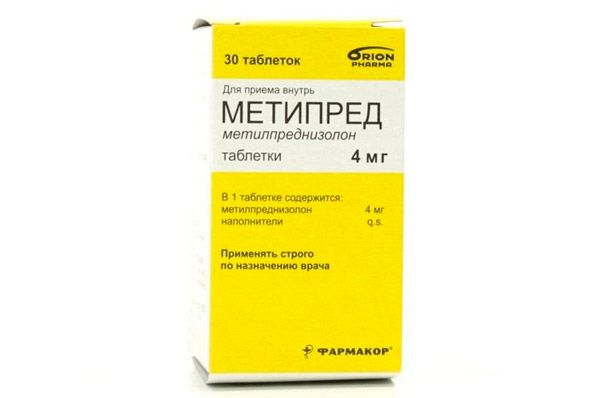
Metipred inhibits the development of tissue reactions to various agents (mechanical and thermal, chemical and immunological, as well as infectious). This allows glucocorticoids to affect the symptoms of the disease, reducing its manifestations, but without affecting the very cause of its occurrence. Methylprednisolone has strong anti-inflammatory properties, which are at least 5 times higher than similar properties of hydrocortisone.
Pharmacodynamics
The main element of the mechanism of action of NSAIDs is the suppression of the process of synthesis of PG (prostaglandins) from the so-called arachidonic acid by slowing down the enzyme PG synthetase.
PGs have a wide range of bioactivity:
- They act as mediators in the development of an inflammatory response: they have a local vasodilatory effect, swelling, exudation, movement of leukocytes, as well as other effects (most often these are PG-E2 and PG-I2);
- They increase the sensitivity of nerve endings to pain conductors (histamine, as well as bradykinin) and mechanical influences, thereby reducing the pain threshold;
- They increase the sensitivity of the hypothalamic thermoregulatory centers to the effects of internal pyrogens (such as interleukin-1, etc.), which are formed in the body as a result of exposure to various viruses, as well as bacterial agents or toxins (most often PG-E2).
It has recently been discovered that there are at least 2 COX isoenzymes inhibited by NSAIDs. The first is COX-1, which controls the process of PG synthesis and regulates the integrity of the gastrointestinal mucosa, blood circulation in the kidneys, and the functioning of platelets. The second is COX-2, which is induced by the inflammation process. It should be taken into account that COX-2 is absent under natural conditions, forming only under the influence of certain tissue factors that provoke the appearance of an inflammatory reaction (these can be cytokines, growth factors, etc.). As a result, it is believed that the anti-inflammatory properties of NSAIDs appear due to the slowing down of COX-2, and side effects occur as a result of the slowing down of COX-1.
The index of proportions of NSAID drugs activity in blocking COX-1/COX-2 substances makes it possible to determine the possible level of their toxicity. The lower it is, the higher the level of drug selectivity to COX-2, and with it, accordingly, the lower the toxicity index.
Pharmacodynamics of glucocorticoids
Having passed through the cell membrane, they bind in the cytoplasm with a special steroid receptor, as a result of which the combined complex is activated, which passes into the cell nucleus, binds to DNA and then promotes the process of formation of messenger RNA. Subsequently, various regulatory proteins begin to be synthesized on the ribosomes. Among them, one of the most important is lipocortin, which inhibits the enzymatic substance phospholipase-A2. As a result of this action, the synthesis of leukotrienes and PGs, which are the main causes of the development of the inflammatory process, is suppressed.
Therefore, for the full effect of glucocorticoids to manifest, several hours must pass after their intake. These substances achieve maximum pharmacological activity when the peak of their saturation in the blood plasma has already passed.
Pharmacokinetics
All drugs from the NSAID category are well absorbed in the gastrointestinal tract. They almost completely combine with plasma albumins, displacing some other substances in return. For example, in newborns they displace bilirubin, which can then cause bilirubin encephalopathy. The most dangerous in these cases are phenylbutazone and salicylates. Most NSAIDs are well absorbed into the joint synovial fluid. NSAIDs are metabolized in the liver, and excreted through the kidneys.
After internal administration, glucocorticoids are absorbed quite quickly and almost completely in the upper sections of the small intestine. They reach the maximum saturation level in the blood in 0.5-1.5 hours. When taken with food, their absorption rate decreases slightly, but the degree of activity remains the same.
Dosing and administration
If arthritis pills from the NSAID group (any drug) are new to the patient, they should be prescribed at first in the lowest dosage. If it turns out that the drug is well tolerated, after 2-3 days the daily dosage is increased. Therapeutic doses of NSAID drugs have a fairly wide range, and recently there has been a tendency to increase single and daily doses of drugs that are well tolerated by patients (these are ibuprofen and naproxen). However, restrictions remain on the maximum dosage of drugs such as phenylbutazone, indomethacin, as well as piroxicam and aspirin. But it should be understood that a therapeutic effect in individual patients can only be achieved when using very high dosages.
In rheumatology, tablets from the NSAID category are prescribed for a long treatment course - in this case, the drug is recommended to be taken after eating. Although, in order to get a quick antipyretic or analgesic effect, it is preferable to take the tablets half an hour before eating or 2 hours after it (wash down with 0.5-1 glass of water). It is advisable not to lie down for 15 minutes after taking the drug - this is necessary as a preventive measure for the development of esophagitis.
The moment of taking the medicine can be selected in accordance with the time when the signs of the disease (feeling of stiffness and pain in the joints) are most pronounced - i.e., taking into account the chronopharmacology of the drug. It is also allowed to deviate from the standard regimen (2-3 times a day) and take NSAIDs at any time of the day - this way, the effectiveness of the medicine is increased, and the daily dosage is reduced.
 [ 53 ]
[ 53 ]
Use arthritis pills during pregnancy
Glucocorticoids are able to penetrate the placental barrier. Non-fluorinated natural medicines do not lead to the development of Cushing's syndrome in the child in the womb, as well as suppression of the hypothalamic-pituitary system of the adrenal glands, and therefore are safe for the fetus. However, long-term use of fluorinated glucocorticoids can negatively affect the fetus, causing, for example, its congenital deformity.
Contraindications
Contraindications for the use of drugs from the glucocorticoid group are conditional, so they are taken into account only in the case of long-term treatment. The following are diseases in which the use of glucocorticoids may be prohibited:
- Diabetes mellitus (in this case, fluorinated glucocorticoids will be the most dangerous);
- Mental illnesses, as well as epilepsy;
- Gastric ulcer or duodenal ulcer;
- Severe form of osteoporosis;
- Severe hypertension;
- Severe form of heart failure.
NSAIDs may be prohibited in cases of erosive and ulcerative gastrointestinal pathologies (especially during the acute stage), severe kidney or liver diseases, individual hypersensitivity, cytopenia, and during pregnancy. It is not permitted to prescribe phenylbutazone or indomethacin on an outpatient basis to patients who require increased concentration due to their professional activities.
Side effects arthritis pills
When using NSAIDs, the most common side effect is destruction of the gastrointestinal mucosa. 30-40% of patients taking drugs in this group suffer from dyspeptic disorders, 10-20% from ulcers or erosions of the duodenum and stomach, and 2-5% from perforation or bleeding.
Side effects of the body when using drugs from the glucocorticoid category:
- Musculoskeletal area – osteoporosis, muscle pain, compression fractures in the spine and pathological fractures, as well as the anatomical head of the femur;
- Gastrointestinal tract – perforations and bleeding, steroid ulcerative lesions of the intestines and stomach, dyspepsia and esophagitis, as well as pancreatitis;
- Skin - acne, hemorrhages, stretch marks and atrophic thinning of the skin;
- Endocrine system organs – secondary amenorrhea, delayed sexual development, problems with the HPA axis, the appearance of symptoms of diabetes mellitus, which was previously latent, as well as steroid diabetes;
- CNS – psychosis, mood instability, idiopathic intracranial hypertension;
- Cardiovascular system – increased blood pressure;
- The process of electrolyte-water exchange – hypokalemia, fluid and sodium retention, edema, hyperglycemic coma;
- Organs of vision – posterior cup-shaped cataract, exophthalmos and glaucoma;
- Immune system – sharp activation of infectious diseases (tuberculosis);
- Metabolism – increased appetite, negative nitrogen balance, hyperlipidemia and hyperglycemia, and hypercorticism syndrome;
- Disruption of the wound healing process.
 [ 52 ]
[ 52 ]
Overdose
In case of overdose, the following symptoms may occur: vomiting with nausea, abdominal pain, depression, drowsiness and lethargy. Metabolic acidosis, decreased blood pressure, tinnitus, development of renal failure (in acute form), respiratory arrest, headache, tachycardia and bradycardia, as well as shock or coma and atrial fibrillation are possible. Overdose may also manifest as dizziness, impaired consciousness, shortness of breath, pain in the epigastric region, increased blood pressure and bleeding in the gastrointestinal tract. In children, bleeding and myoclonic seizures, renal or hepatic dysfunction and abdominal pain may occur.
 [ 54 ]
[ 54 ]
Interactions with other drugs
NSAIDs can enhance the effectiveness of oral hypoglycemic drugs, as well as indirect anticoagulants. At the same time, they also reduce the effectiveness of antihypertensive drugs, increase the toxic properties of digoxin, aminoglycoside antibiotics and some other drugs - this plays a significant role in prescribing drugs.
It is recommended to avoid the combined use of diuretics and arthritis pills from the NSAID group, since, firstly, in this case the diuretic effect is reduced, and secondly, it can cause renal failure. The most dangerous combination is triamterene and indomethacin.
There are also medications that, when combined with NSAIDs, can have different effects on their effectiveness:
- aluminum-containing antacids (such as Maalox or Almagel, etc.), as well as cholestyramine, reduce the absorption of NSAIDs in the gastrointestinal tract. Because of this, when additionally prescribing these antacids, it is necessary to increase the dosage of NSAIDs, and when using them together with cholestyramine, it is necessary to take a break between doses of at least 4 hours;
- sodium bicarbonate, on the contrary, increases the absorption of NSAIDs in the gastrointestinal tract;
- the anti-inflammatory properties of NSAIDs are enhanced when combined with glucocorticoid and basic drugs (aminoquinolines and gold preparations);
- The analgesic properties of NSAIDs become stronger when combined with sedatives and narcotic painkillers.
Shelf life
It is recommended to use arthritis tablets within 2-3 years from the date of manufacture.
 [ 61 ]
[ 61 ]
Attention!
To simplify the perception of information, this instruction for use of the drug "Arthritis pills" translated and presented in a special form on the basis of the official instructions for medical use of the drug. Before use read the annotation that came directly to medicines.
Description provided for informational purposes and is not a guide to self-healing. The need for this drug, the purpose of the treatment regimen, methods and dose of the drug is determined solely by the attending physician. Self-medication is dangerous for your health.

